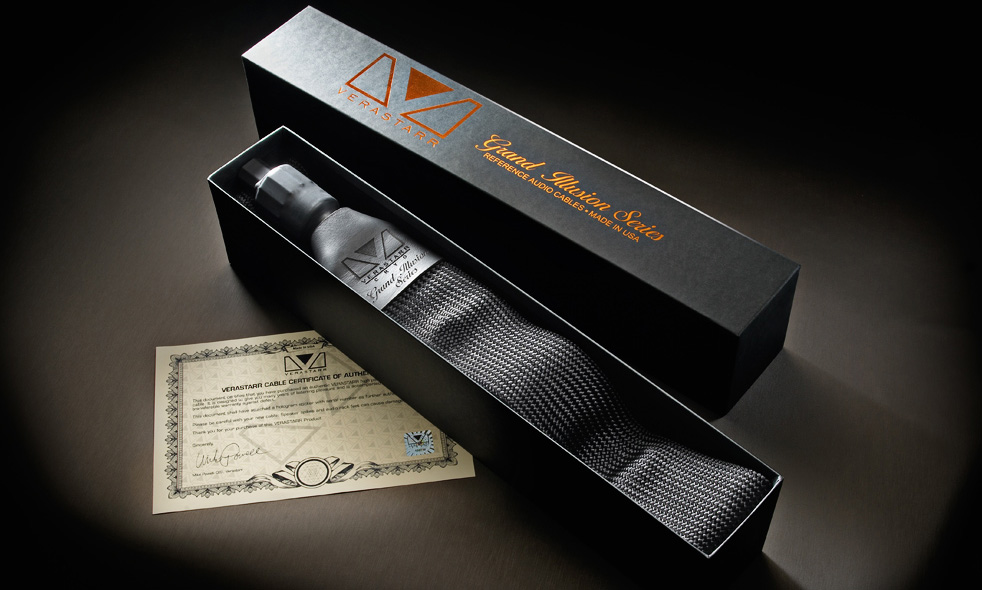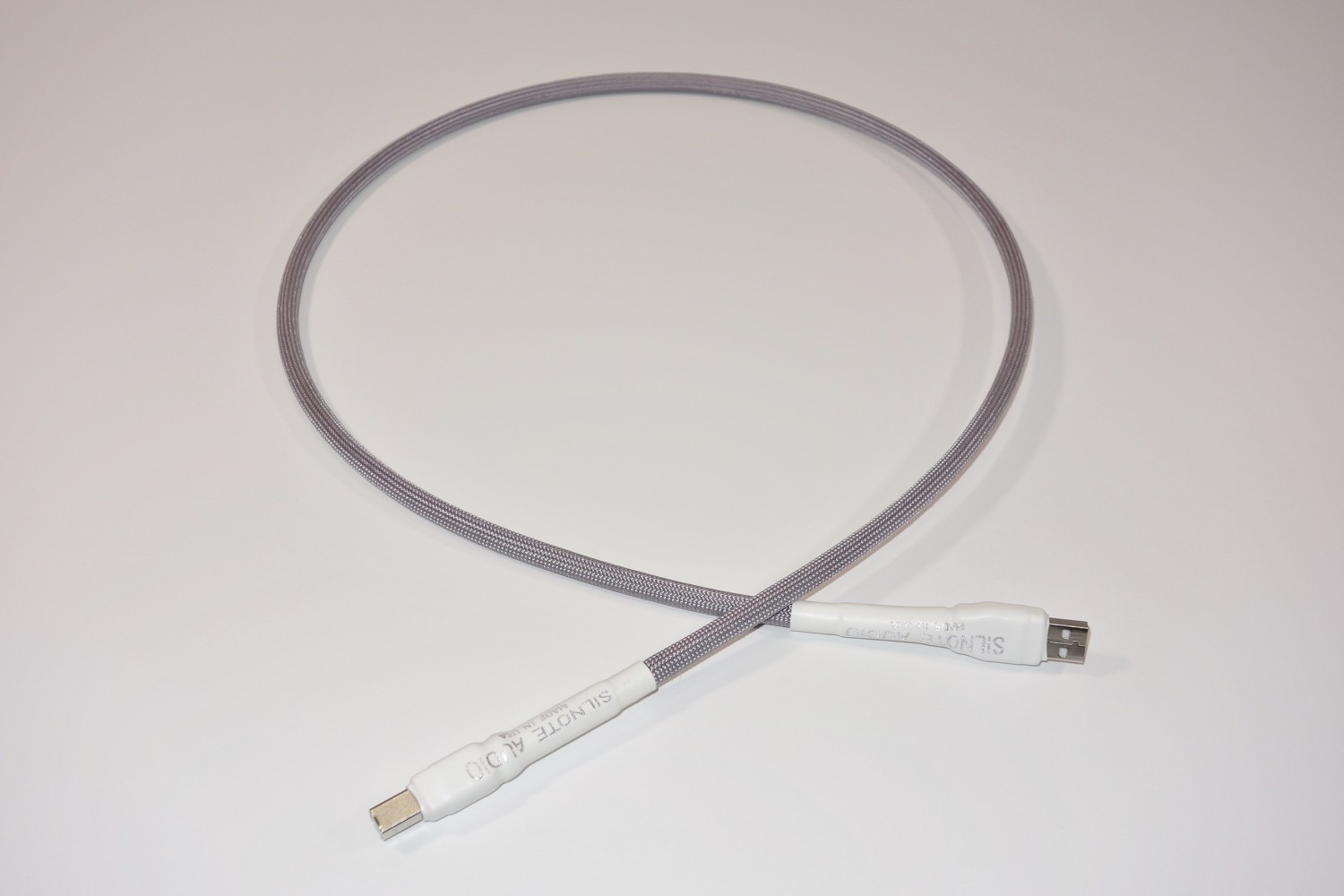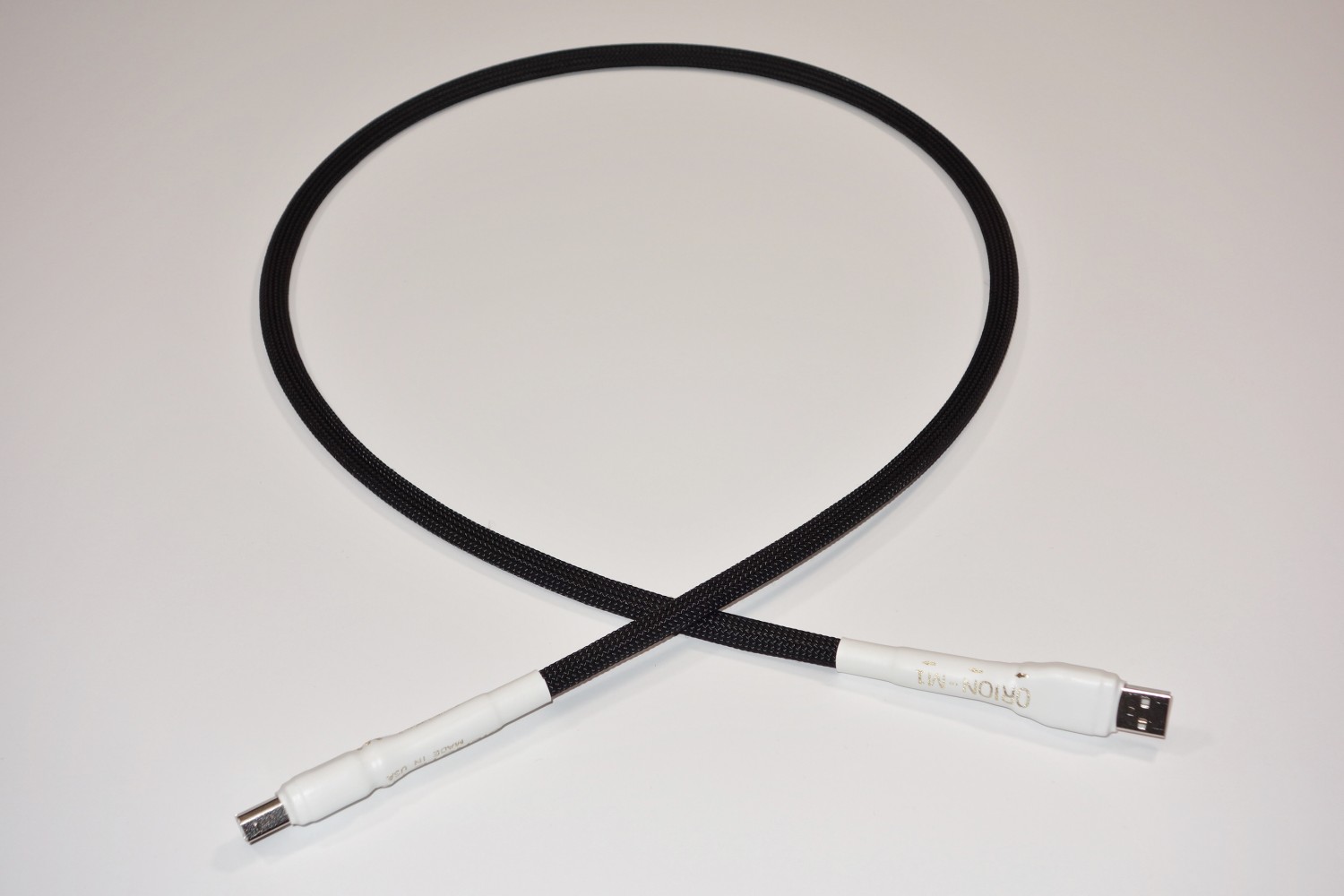Introduction
I’ve been in this hobby for some time, and I’m very familiar with lots of the marketing hoopla and ridiculous gadgets that various manufacturers use to try to reel in customers searching for the ultimate illusion of the live performance in the home; an MBA education and a critical mind makes me take everything I see in this hobby with a grain of salt, some grains being much bigger than others. But if you were to ask me for a recent product I’ve come across that would receive the largest grain of salt, the powered Acoustic Revive DSIX digital cables and optional DPS-1 power supply would certainly win the award for “You have got to be kidding me.”
But don’t run off with that grain of salt: I’m going to need it to season the crow I’ll eat by the end of this review.
Background
The DSIX cables are offered in two different versions: one with RCA connectors, the other with XLR connectors. That’s it. But what makes these cables different from others in the market is the use of an isolation transformer in the signal path.
Now, let’s reflect on that: some gear, ala SET amps, rely on transformers in the output stage, but I recall it was Lew Conrad (or Bill Johnson) from CJ fame who said, “there is no perfect part.” So, why on earth should a stinking isolation transformer in the signal path make things better? If anything, I’d expect reduced low-level detail and smoothed over dynamics. That’s bad juju, my friends. But according to Acoustic Revive’s literature, the DSIX cables will improve the “throw rate” (the start up speed of a digital shape wave, whatever that is) and reduce jitter. Quite a fantastic claim, but certainly not the first over-the-top claim in audio marketing hyperbole, I must say.
As outrageous as it sounds, you can also upgrade the power supply to the DSIX digital cables. What next?! The DPS-1 is an outboard dedicated power supply for use with the DSIX 1.0 and DSIX 1.0B, designed to replace the wall-wart type supply included standard with the cables. The marketing literature suggests the DPS-1 will result in a better signal-to-noise level with accompanying improvement in sound quality; but call me skeptical: any time I see a product offered with strongly suggested accessories, it just smells to me like they should’ve been packaged together in the first place. After all, if you’re willing to drop a grand on a digital cable, what’s another $1,500 if you’re after the state-of-the-art?
For additional background information, I’d direct you to Acoustic Revive’s website if you’d like to view some of the oscilloscope pictures of non-DSIX vs. DSIX cables, but specifications and computer plots don’t go too far with this reviewer. It’s all in the listening. Incidentally, these cables have won quite a few awards overseas, so evidently someone was listening too.
Listening Impressions
I ended up conducting a series of listening tests for these cables, broken down by source / DAC as listed below.
Slim devices Squeezebox + Modified Benchmark DAC
In this instance, I copied CDs to my PC and then played them through my system via the Squeezebox. Listening to Tom Waits’ Mule Variations, the track “Cold Water” has a barking, raw quality to it which was enhanced by the DSIX cable, thanks to a quieter noise floor and better attack on the leading edge of transients. Another favorite cut, El Perro Del Mar’s “Candy” of her self-titled record, had slightly better high frequency extension and decay. The soundstage had a more open quality and instruments took on a bit more body with the DSIX in place, as though a muddled mass of instruments were given a bit more room between them in the recording studio.
Now, having said all that, I can also say that I was listening carefully. These were not night-and-day differences; they were more like night-and-dusk. But they were there. Looking over my listening notes, I found something funny when listening to the Ditty Bops Moon Over the Freeway release: “the playback doesn’t have the organic life that it does with the CD playback.” Hello, I just said “organic life” as being a descriptor of CD playback! If nothing else, that should tell you that PC-based audio formats wirelessly streamed have some catching up to do (which I intend to explore in the months to come), rather than being any limitation of the DSIX cable.
Multiple Transports + Modified Benchmark DAC
All of the improvements I cited with the Squeezebox test were again applicable using the Modwright 9100, a Pioneer Elite DVD player, or an Exemplar CD player, only more substantially.
Again, staging was clearer and more open, with improved space around the musicians in the Ditty Bops track than with other cables. There was better separation of each note, such that it was easier to hear each string of Jack Johnson’s guitar ring rather than simply hear the strumming. One other area where I noticed a distinct improvement was in the midrange, where there was an improvement in clarity and openness, which reminded me of the effect of going from an older MOSFET amp to a newer one where the “MOSFET mist” which was so prominent on the former was successfully removed from the latter, allowing you to get a better representation of the performance devoid of unwanted electronic artifacts that end up homogenizing the sound.
However, even with the clearly improved performance of the dedicated transports over the Squeezebox, I must report that the changes were not earth-shattering or jaw dropping, but more of the “if I listen intently, I can clearly pick up XYZ” type. So often we reviewers are guilty of making any change sound like it’s the bee’s knees, so let’s keep things in perspective: a DSIX cable isn’t going to make you fall out of your chair when you listen to mid-fi digital playback, but it will make it clearly better. If it’s worth it to you, so be it, but from a system-building perspective, I’d have to question if spending big money on the DSIX and power supply would be worth it when cabling should always be an accessory to match higher quality gear. High dollar cables plus mid-fi components make little sense, which you probably already know.
Esoteric P03 Transport + Esoteric D03 DAC
Now, by the time I got to this last test, I was honestly anticipating writing the distributor to tell him that his product, despite all its marketing fluff, was not worth our readers’ time. But from the first few notes of the DSIX in the system between Esoteric’s P03 and D03, it became obvious that this digital cable was doing some incredible things to what I consider to be the standard in digital playback today. The Esoteric P03 / D03, while not a part of my reference system, were made available for audition via Epic Audio in Houston, TX. Impressions of the Acoustic Revive cable’s impact on the P03 / D03 was performed in traditional A/B testing methodology vs. the prior digital cable, the Cerious Technologies.
First off, while I never would have dreamed it possible to improve upon the heft and weight of the Esoteric playback, the DSIX provided more detailed and extended bass response. Additionally, even with the incredible build quality and resultant low-level detail retrieval of the Esoteric gear, the DSIX cable picked up more nuance and detail. Whether it be the movement of air around a singer’s mouth, the extended decay of a ringing bell, or the ambient venue information, the DSIX was able to present it in a manner that never seemed contrived or spotlit; at no point did I find my fears of reduced detail or smoothed over dynamics in the playback with the DSIX.
One other change that was clearly obvious was in midrange tone; if you read my reviews of the Esoteric XO1 D2 and the Modwright 9100, you’ll know that I felt the Modwright had better tonal expression in the midrange than the XO1 D2 (tubes be praised!). Now, while this isn’t the XO1 I’m using the DSIX with, I can say I’ve heard enough Esoteric digital gear to say that it very much has a house sound (which my review of the XO1 D2 covers). With the DSIX in place, the Esoteric gear exhibited a warmth and a naturalness in the midrange that had previously eluded it, changing what was a completely competent presentation that was more about respect than love to one where its just about the music. In the Esoteric combo, the DSIX provided a degree of change that I would consider being like one of changing from a barely listenable solid-state amp to an audiophile grade design.
(For fun, I did a few comparisons of Redbook with the DSIX versus the SACD using other cables. Guess what? The SACD won, quite clearly. So, while the DSIX cable makes clear and obvious improvements in the performance of the Esoteric digital separate, it cannot make an inferior format superior.)
As a final point, I must say that in all instances, the DPS-1 power supply made an improvement on the sound, but I would consider it indispensable with the Esoteric separates. Again, improved tonal expression in the midrange and bass extension were clearly present. Additionally, I found the DSP-1 very sensitive to power cords, clearly favoring shielded power cords which resulted in an audibly lower noise floor. My God, swapping power cords on the outboard power supply of a digital cable—can we go any further off the cliff? I wish these things didn’t matter dear reader, as our lives would be easier, but I’d be lying if I said they didn’t. Everything matters.
Conclusion
In a highly resolving system, cables will always make a difference. And what my repeated tests confirmed is that, with the Acoustic Revive DSIX cables and DPS-1 power supply, the more resolving the equipment, the bigger the difference these cables made. You cannot make a silk purse from a sow’s ear, so there should be no surprises that the DSIX cables couldn’t make the poorer streaming audio formats that much better. But as my tests progressively moved me from “low-fi” to “state-of-the-art” digital playback, the DSIX cables demonstrated a substantial effect on the playback which was clearly superior to anything I or a number of other audiophiles have ever heard coming from the Esoteric separates.
And that’s what gets me: what I find most ironic is that the digital equipment from Esoteric, which sets the standard in build quality, was so responsive to the DSIX cable and DPS-1 power supply. One would expect the better the build quality, the more agnostic the transport / DAC combo would be to digital cabling. However, despite the VRDS transport and bomb-proof build quality in the Esoteric P03 / D03, evidently jitter is still present and the DSIX clearly removes it, resulting in vastly improved performance for this already remarkable combination. I can make an unqualified recommendation: if you have invested big money in digital separates, you have got to hear what the DSIX & DPS-1 power supply can do! Call your dealer and get this stuff in for an audition, but have your checkbook ready; if you’re like the audiophiles who I let listen to these cables, you won’t be letting them out of your system again.
The post Acoustic Revive DSIX Series Digital Cable System Review appeared first on Dagogo.







































